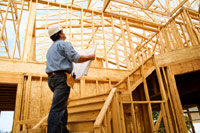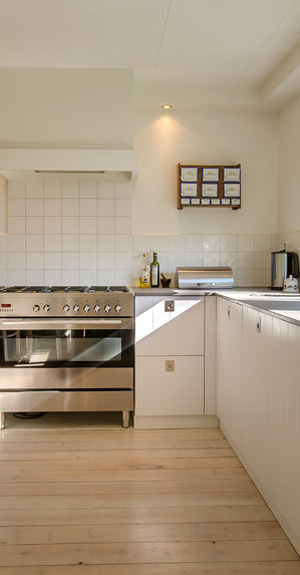Resources
 Information about Associations, Organizations, and Government Agencies for the Home Building Industry
Information about Associations, Organizations, and Government Agencies for the Home Building Industry
Associations are professional organizations dedicated to advancing their industry or craft and helping to educate the public about methods, materials and technologies they use. The also offer continuing education and certifications for their members to elevate the level of professionalism in the home building industry. Many of these organizations also conduct extensive product research, and aid in the setting of industry wide standards for product and workmanship performance.
Durability by Design: A Guide for Residential Builders and Designers. Few people intentionally consider durability when designing a home, but rather rely on experience and market acceptance to make design decisions. This approach to design works best in a stable housing market where architectural preferences and material choices do not change or change very slowly. The housing market, however, tends to be dynamic rather than stable and new materials and preferences influence the market continuously, sometimes in dramatic ways. This dynamic condition also places a responsibility on designers and builders to properly apply their experiences, which are often based on older construction methods and materials, to new materials and design conditions. As a result, it is important to understand why certain practices have been effective (or ineffective) in the past so that they can be properly interpreted and considered in the design and construction of modern homes.
Durability by Design PDF guide from the Partnership for Advancing Technology in Housing is intended to raise the awareness and understanding of building durability as a design consideration in housing and covers basic concepts of durability presenting recommended practices including numerous construction details and design data for matters such as moisture management, ultraviolet (UV) protection, insects, decay, corrosion, and natural hazards.
The National Institute of Building Sciences (NIBS) serves as the building community’s connection to the authoritative source of information on matters of building regulation, science and technology. NIBS was authorized by the U.S. Congress in 1974, when Congress recognized the need for an organization that could serve as an interface between government and the private sector. The Institute’s mission is to improve the building regulatory environment, facilitate the introduction of new and existing products and technology into the building process and disseminate nationally recognized technical and regulatory information. www.nibs.org
 The National Association of Home Builders is a Washington, D.C. based trade association whose mission is to enhance the climate for housing and the building industry. Chief among NAHB’s goals is providing and expanding opportunities for all consumers to have safe, decent and affordable housing. As “the voice of America’s housing industry,” NAHB helps promote policies that will keep housing a national priority. Founded in 1942, NAHB is a federation of more than 800 state and local associations. About one-third of NAHB’s 215,000 members are home builders and/or remodelers. The remaining members are associates working in closely related fields within the housing industry, such as mortgage finance and building products and services. www.nahb.org
The National Association of Home Builders is a Washington, D.C. based trade association whose mission is to enhance the climate for housing and the building industry. Chief among NAHB’s goals is providing and expanding opportunities for all consumers to have safe, decent and affordable housing. As “the voice of America’s housing industry,” NAHB helps promote policies that will keep housing a national priority. Founded in 1942, NAHB is a federation of more than 800 state and local associations. About one-third of NAHB’s 215,000 members are home builders and/or remodelers. The remaining members are associates working in closely related fields within the housing industry, such as mortgage finance and building products and services. www.nahb.org
The American Institute of Architects (AIA) has a Government Affairs Department that works with the U.S. Congress, the White House and various agencies to educate government leaders and others about their policies and objectives regarding community development and livability. This effort involves the AIA in a range of issues including housing, urban renewal, accessibility, historic preservation, energy and environmental standards. For more information on their work access www.aia.org
The National Wood Flooring Association has expanded the Design-a-Room feature on its consumer web site. Consumers now have the option of designing a room using several room scenes: a foyer, living room, bedroom, dining room and kitchen. In each room, visitors can choose from among 14 different wood flooring species, both domestic and exotic. The direction of the flooring can be changed as well, from horizontal, to vertical, etc. To give consumers even more custom design capabilities, wall color can be changed as well, to try different looks with each type of flooring. For more information about the Design-a-Room feature, visit www.woodfloors.org.


